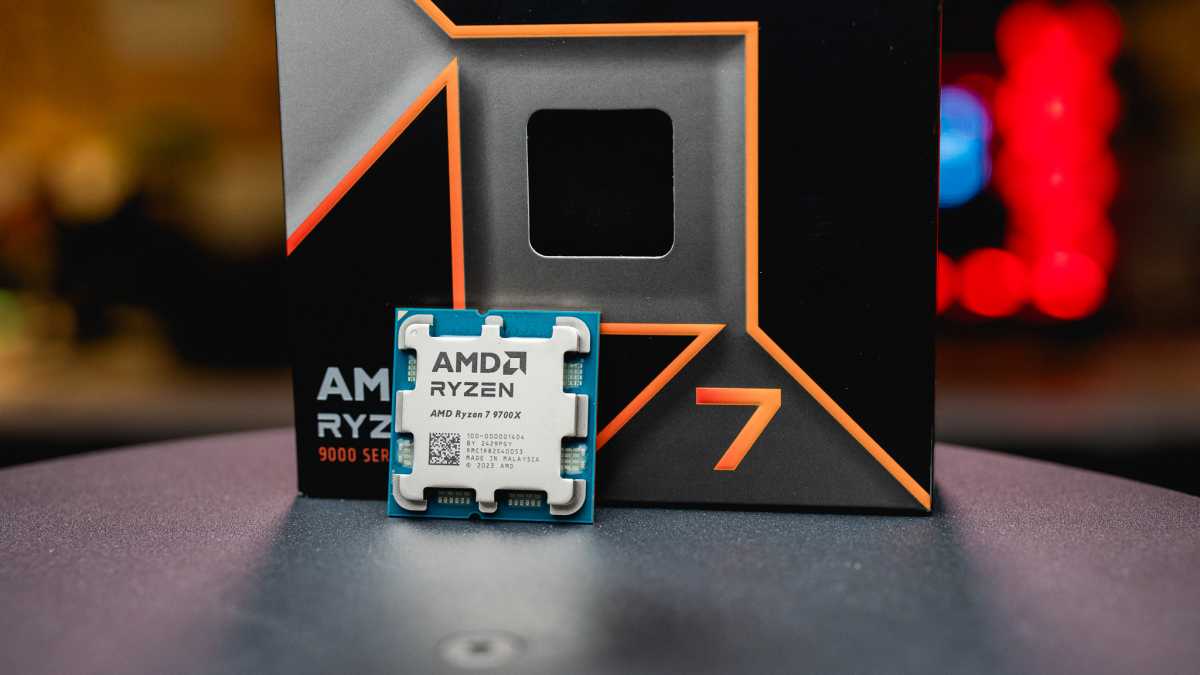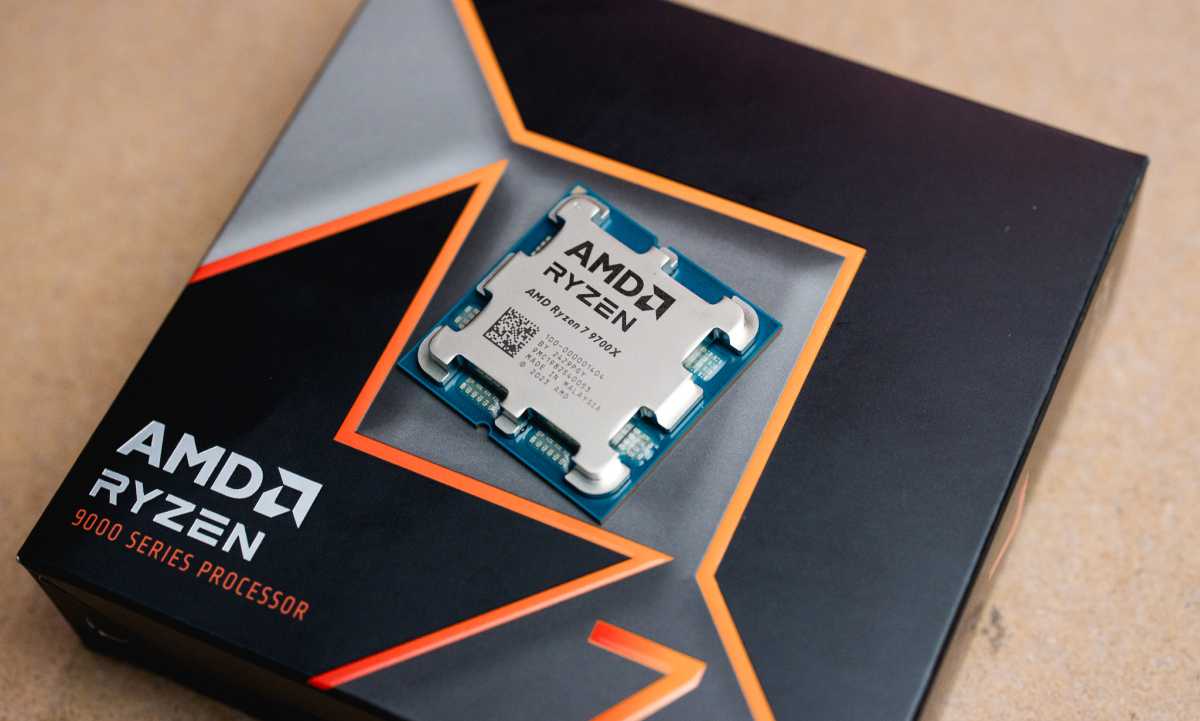[ad_1]
AMD’s hotly anticipated Ryzen 9000 desktop processors launched earlier this month, and properly, the gaming efficiency enhancements seen by impartial reviewers weren’t as sizzling as anticipated – or as sizzling as AMD attested to in early advertising statements. So what occurred?
It’s been an extended, winding highway as reviewers and AMD alike hunted down solutions. Final night time, AMD launched a group put up pointing the finger at a confluence of varied points: A distinction within the Home windows mode used for testing, VBS safety settings, how rival Intel programs had been configured, and – as ever – the particular video games benchmarked.
Phew. In the present day, David McAfee (who leads AMD’s shopper channel section) joined us for a particular version of The Full Nerd to untangle the mess and clarify precisely what occurred.
As you learn the weblog put up (and take heed to David’s chat), it turns into clear: An enormous a part of this stems from how AMD examined versus how reviewers examined, and never simply the video games chosen. Right here’s a tidbit from AMD’s put up:
“The ‘Zen 5’ structure incorporates a wider department prediction capability than prior ‘Zen’ generations. Our automated check methodology was run in ‘Admin’ mode which produced outcomes that replicate department prediction code optimizations not current within the model of Home windows reviewers used to check Ryzen 9000 Sequence. We now have an additional replace on accessing this efficiency for customers beneath.”
PC customers will have the ability to faucet into these efficiency enhancements when Home windows 11’s annual function replace, dubbed “24H2” for now, begins to roll out later this 12 months – its department prediction optimizations mimic the Tremendous Admin adjustments AMD examined with. (The always-excellent Wendell of Level1Techs already has a good and nerdy evaluation video concerning the patch, which is accessible to Home windows 11 Insider preview testers.)
However no one must be utilizing Tremendous Admin mode to run video games, and McAfee careworn that within the interview. Why does AMD achieve this, and why had been the variations so pronounced this technology? It’s all about AMD’s established, automated testing framework, which runs in Tremendous Admin mode and is critical to have the ability to assessments merchandise at scale throughout a number of {hardware} configurations. It created a blind spot, McAfee stated.
“Traditionally, when our automation framework was constructed, the distinction between efficiency in Tremendous Admin mode and what you’d take into account consumer mode when testing was negligible – there was little or no distinction there. That has modified over time, and fairly actually, it was a change we had been blind to. After we collected this knowledge, we didn’t see that distinction as a result of for a number of generations we had been utilizing that very same framework to gather knowledge by out automation suite. So clearly an oversight on our half, clearly one thing the place we had been a bit disconnected from how reviewers had been testing these purposes and the way customers had been enjoying video games on their programs. And that’s been corrected in the best way that we gather knowledge for our merchandise going ahead.”
The change that AMD was blind to is a part of what bit its preliminary advertising numbers for Ryzen 9000.
“What we examined for Computex was working present delivery construct of Home windows, 23H2, however it was run within the Tremendous Admin mode that bypasses quite a few the safety layers in Home windows and will get nearer to the naked steel efficiency. It’s a case of an oversight of how a lot a efficiency delta there was in these two working modes.”

Willis Lai/Foundry
McAfee – and AMD’s group put up – additionally touches on how sport choice and even sport scene choice can affect benchmark outcomes, a reality alluded to by {Hardware} Unboxed’s continued glorious protection of this saga. Whether or not you utilize a built-in benchmark or manually run by in-game scenes for testing issues, as McAfee elaborated.
“Even inside a person sport, the stability of the system the place parts of a sport which lean heavier on the CPU versus lean heavier on the GPU lead to huge variations in relative efficiency between product A and product B. I believe you possibly can take a look at many video games the place you possibly can take a look at important variations between the 2 merchandise, and transfer to a different scene the place you successfully get readability between the 2.”
You’ll be able to hear McAfee discuss far more about how AMD selected its Ryzen 9000 gaming benchmarks, together with how the corporate was stunned by some reviewer assessments this technology, across the 30 minute mark of the interview. It’s a captivating pay attention – you possibly can inform there’s clear thought and intent going into the method, and it’s merely not a case of “benchmark video games that present us in one of the best mild,” as some group members have been implying throughout the online.

Willis Lai / Foundry
One last bit to the touch on earlier than I encourage you to go watch the complete, genuinely insightful interview. In the direction of the tip, my cohost Gordon Mah Ung asks merely: “Is AMD blaming reviewers right here? Did {hardware} reviewers screw this up?”
“Under no circumstances,” McAfee stated.
“On the finish of the day, there have been a sequence of choices that AMD made, that differed from how reviewers had been testing, that led to completely different conclusions,” McAfee stated. “This isn’t saying that reviewers did something fallacious, or that there’s something within the strategy of how these evaluations had been accomplished that was incorrect. We had been as puzzled by a number of the outcomes that reviewers had been seeing because the Ryzen followers are on the market on the planet, and that’s actually what led us to this form of multi-layered conclusion that there’s quite a few components happening right here that created that separation.
That is no shade in any respect on reviewers and the way they examined, that is utterly on issues that we didn’t actually perceive as part of the best way that we examined and configured our merchandise, and the way that differed from each reviewer sport suites transferring in a barely completely different path, in addition to how they examined the product versus how we did. It’s not a criticism of reviewers or how they check, merely important variations in setup and configuration that received us from level A to level B and I believe we perceive that now.”
And also you’ll additionally perceive how a sequence of molehills was a mountain when you watch our full AMD Ryzen interview with David McAfee. This recap is simply the tip of the iceberg – take a look at the whole discuss for many extra fascinating particulars, equivalent to why AMD configured Intel check programs the best way they did, how Home windows 11’s VBS function impacts all this, whether or not Home windows 10 customers can even get department prediction optimizations, why AMD didn’t delay Ryzen 9000’s launch given this confusion (it is smart!), core parking, and a complete lot extra.
Make sure to subscribe to our new, devoted Full Nerd channel on YouTube for particular interviews and nerdy PC podcasts like this week-in and week-out. We’ve break up the podcast off from the fundamental PCWorld channel so click on that button should you don’t need to miss out!
[ad_2]
2024-08-22 20:17:21
Source hyperlink:https://www.pcworld.com/article/2435929/amd-talks-ryzen-9000-controversy-we-were-as-puzzled-as-reviewers.html

